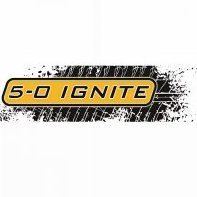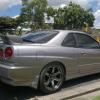Limits of stock 5/16" (8mm) fuel lines
Announcements
-
Similar Content
-
Latest Posts
-
By DraftySquash · Posted
It was roughly 3.5 hours. car went in around 11:00 and I was done around 2:30 He did the initial runs, install the BC and then Nistune install and tune. The best part was sitting in the lobby and hearing the skyline on full throttle at the dyno 😂😂 -
Glad it all went smooth. How long did the tuning process take?
-
By DraftySquash · Posted
Yeah that was kind of the same feedback my tuner gave me. the boost tee is until I can sort out my plan for the electronic boost controller and what I’d get, where I’d mount the dash etc. I’m happy with this until I can figure it out. Not a big fan of the A-pillar gauges. I’d like to get a clean install of the boost gauge - something digital like GFB. Something like that might fit neatly where the ashtray is and look clean. I feel like replacing the OEM triple gauge is a bit extreme for a weekender like my skyline. And it’s not making crazy power to need all the additional sensors/gauges. -
I'm about to swap my box to Tremec T56 Magnum F & initially thinking of re-using my DCS twin plate (can get it re centred for the bigger spline) but it's been called out the box will be noisy (rattle) as the clutch is unsprung. So I'm doing as much research as possible. I'm not so worried about holding the power as I'll go the track version which on paper will hold the maybe 1000hp I make. It's the longevity I worry about. DCS told me they don't use a sprung centre as it's just something that can break. The uni clutch has a very complicated sprung centre. Any one had or heard about any issues with it failing? Thanks in advance.
-
Auto is at least 10% (from my real, actual experience with different torque converters and manual on the same setup) ~185rwkw at 11.6psi (peak!) is entirely what one would expect without a FMIC or anything else on the intake, it does bleed off towards the higher RPM so it's what, 9psi there? Note: There is nothing that can be done about this with a manual boost tee. If you want to hold it steady and gain more top end, well - You will need electronic boost control.....
-










Recommended Posts
Create an account or sign in to comment
You need to be a member in order to leave a comment
Create an account
Sign up for a new account in our community. It's easy!
Register a new accountSign in
Already have an account? Sign in here.
Sign In Now